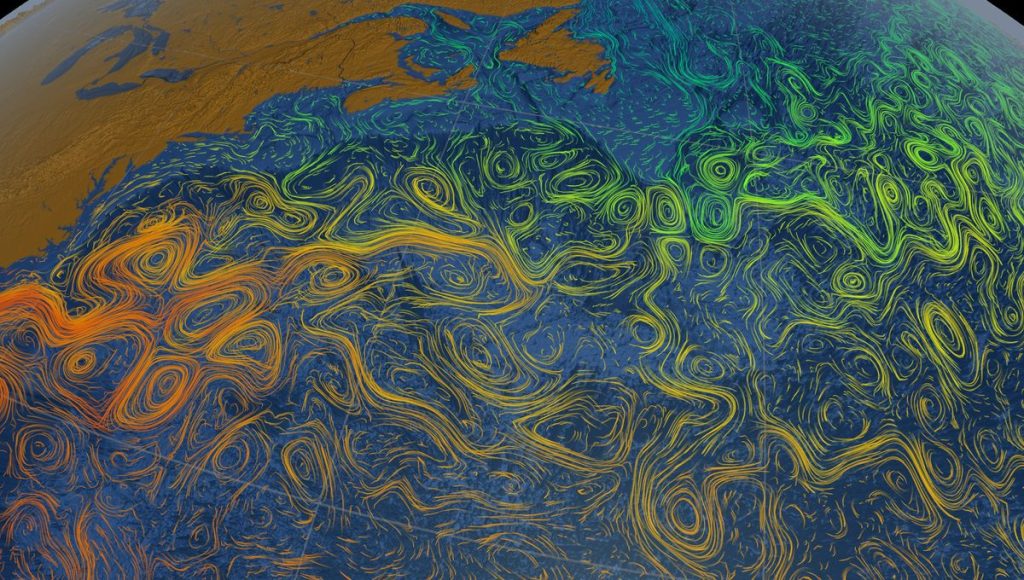One of the big questions about climate change is how it will affect the Gulf Stream. Based on how it performed during the last ice age, it is likely that as the world warms, it will weaken, causing major upheavals in the climate of Europe and beyond.
The Gulf Stream is part of the North Atlantic Gyre, a main artery of clockwise ocean currents driven by wind patterns that help maintain the climate of the east coast of the United States and parts of Europe.
In a new study, scientists from University College London (UCL) have concluded that the North Atlantic Gyre was unexpectedly stronger during the last ice age than it is today, due to stronger winds across the subtropical North Atlantic.
Fossils of microorganisms called foraminifera left in marine sediments suggest that the Gulf Stream was about 1 kilometer (0.6 mile) deeper than it is today, reaching as much as 2.5 kilometers (1.5 miles) deep, about 20,000 years ago. They also suggest that the Gulf Stream was powerful because of stronger winds and thicker water.
“We find that during the last ice age, the Gulf Stream was much stronger due to stronger winds in the subtropical North Atlantic. As a result, even though other parts of the Earth were much colder, the Gulf Stream was still transporting huge amounts of heat northwards,” said lead author Dr Jack Wharton, from the Department of Geography, University of London. statement.
This will have implications for the future, researchers say. Gulf Stream They are sensitive to changing wind patterns, which are expected as the climate crisis intensifies.
“Recent studies using climate models have shown that weaker winds in the future could weaken the Gulf Stream and lead to cooling in Europe,” Dr Wharton added.
of Gulf Stream It’s also a cog in a wider, more complex system called the Atlantic Meridional Overturning (AMOC), in which warm upper Atlantic water flows northwards and cooler, saltier, deeper water flows southwards.
“Rather than the familiar conveyor belt metaphor, it may be better to think of the AMOC as a series of interconnected loops. There is a subtropical loop, which includes the Gulf Stream, and a subpolar loop, which carries heat further north into the Arctic,” explained study co-author Professor David Thornalley, from UCL’s Department of Geography.
“Our findings suggest that during the last glacial period, the subtropical loop was probably stronger than today, while the subpolar loop was weaker. Therefore, when investigating anthropogenic climate change and the AMOC, we need to consider how these different parts change and how each is associated with different climate influences,” Thornalee added.
Scientists have long believed that climate change It has already weakened AMOC And this worrying trend is set to continue for decades to come: melting Arctic glaciers could prevent the formation of deep oceans, preventing warm tropical waters from reaching Europe and cooling the continent.
If the AMOC were to completely collapse (unlikely) Possible scenarios Severe climate change could cause temperatures to drop by 10-15°C (18-27°F) in parts of Europe.
“We have not always realised how much ocean currents transport heat around the planet and shape our climate. Paradoxically, a warming climate could disrupt the AMOC and cool much of Europe. Our new study adds to this understanding, showing that weakening of the winds that drive the Gulf Stream could reduce the circulation of heat, further affecting the continent,” said co-author Professor Mark Maslin, also from UCL’s Geography Department.
The new study is published in the journal Nature.


